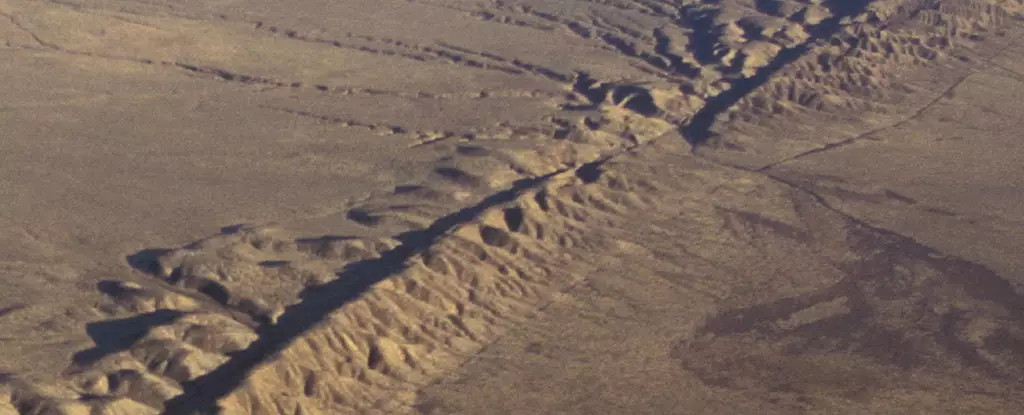For too long, humanity has been mesmerized and paralyzed by the roar of earthquakes—sudden, violent shifts that take lives and devastate communities within moments. Yet, lurking within the Earth’s complex movements are subtle, slow-motion earthquakes that get far less attention but hold profound significance. These slow slip events, often unnoticed or dismissed as harmless, are now forcing scientists to rethink the nature of seismic risk. Their ability to release tectonic stress gradually, over days or weeks, suggests a layered, more nuanced portrait of fault dynamics—one that could revolutionize our understanding and preparedness for catastrophic quakes.
What makes these slow earthquakes so insidious is their deceptive gentleness. Unlike their destructive counterparts, they often produce ground movements too modest to be felt without sophisticated equipment. This obscurity allows these phenomena to quietly release accumulated stress along fault lines, potentially acting as pressure valves that might stave off larger quakes—or, paradoxically, set the stage for a devastating release. The real challenge lies in deciphering whether these tremors serve as protective buffers or ominous harbingers of worse to come. Our current approach—focused heavily on detecting sudden events—misses this slow, telltale evolution of tectonic stress, leaving gaps in early warning systems that could have life-saving implications.
Technological Breakthroughs: From Mystery to Forewarning
Recent advancements in sensor technology have propelled the study of these minimalistic tremors from theoretical curiosity to actionable intelligence. Deep beneath the ocean’s surface, near the perilous Nankai Trough off Japan, researchers deploy highly sensitive borehole sensors capable of detecting minute shifts of mere millimeters. These innovations mark a pivotal turning point: scientists are no longer dependent solely on surface tremors, which are often too late or too weak to offer warnings. Instead, continuous, real-time monitoring of slow slip events provides insights into the nuanced behavior of fault lines, deepening our understanding of stress accumulation and release.
The real-time tracking of SSEs in 2015 and 2020 sheds light on a critical process—these ripples across a fault may act like shock absorbers, preventing the buildup of catastrophic energy. However, the current evidence is less clear on whether these silent slips merely relieve stress or inadvertently set the stage for a larger earthquake. The implications are profound. If we can recognize patterns or clues—like the pressure build-up associated with fluid-rich fault zones—we could develop predictive models that identify when a fault is transitioning from benign to dangerous.
The Dual Nature of Slow Quakes: Protective or Precursors?
The relationship between slow earthquakes and their fast, destructive relatives remains complex and contentious. On one hand, these gentle shifts could serve as natural safety valves, diffusing the tectonic tension that builds beneath our cities and coastlines. If leveraged correctly, understanding these events might extend our earthquake warning times, giving communities more precious moments to evacuate or brace for impact. On the other hand, the geological record shows that some large quakes have been preceded—or even triggered—by subtle precursors like slow slip events. This duality injects uncertainty and urgency into scientific efforts.
Regions like the Cascadia Subduction Zone off North America’s west coast exemplify the stakes involved. Historically capable of generating magnitude 9 earthquakes and deadly tsunamis, Cascadia’s silent moments—its “deadly quiet” intervals—may hold clues if only we listen carefully. The challenge lies in distinguishing between harmless slow slips and dangerous precursors within these almost imperceptible movements. To truly protect vulnerable populations, authorities must prioritize high-precision, continuous monitoring—accepting that the Earth’s secrets are buried beneath layers of complexity and subtlety.
Implications for Policy and Societal Readiness
While the science around slow earthquakes is still emerging, it already demands a reevaluation of our disaster preparedness strategies. Relying solely on traditional earthquake monitoring—like detecting sudden ground shaking—is an outdated paradigm that neglects the nuanced signals that could forewarn devastating events. Governments and communities in seismic hotspots should invest in high-tech sensor networks and interdisciplinary research that bridges geophysics, fluid dynamics, and risk modeling.
Furthermore, acknowledging the existence and significance of slow slip events can foster a more balanced public discourse. It encourages us to move away from panic-driven, reactionary policies toward a more strategic, science-informed approach to mitigation. For instance, rather than reacting solely to immediate threats, we should develop long-term resilience plans that incorporate continuous monitoring data, enabling smarter land use, more effective evacuation routes, and targeted infrastructure reinforcement.
In an era where climate and natural disasters increasingly threaten the fabric of society, our grasp of Earth’s hidden movements must no longer be superficial. Slow earthquakes symbolize both our scientific curiosity and our moral responsibility: to understand deeply and act responsibly. Only through embracing this complexity can we hope to mitigate the catastrophic impacts of Earth’s unpredictable fury and foster a future where preparedness is rooted in knowledge rather than mere guesswork.

